ASUS TUF Dash F15 FX517 review
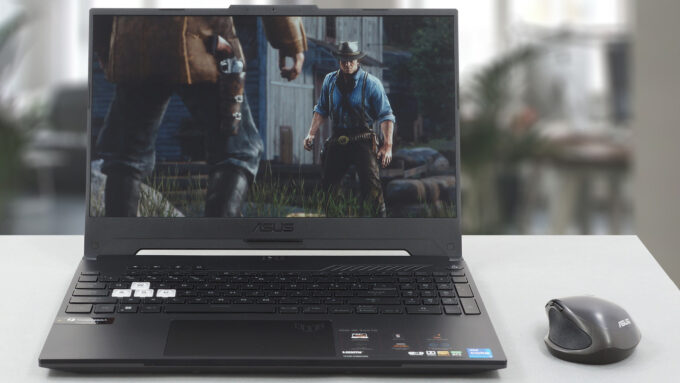 The TUF – F15 was … wait, the TUF Dash F15 was a very solid laptop last year. However, it was hindered by its 35W CPU. In fact, we are pretty sure that a lot of manufacturers were really deceived by Intel’s promises. While Tiger Lake proved to be successful in general, the 35W solutions were just not good enough, due to their low core count.
The TUF – F15 was … wait, the TUF Dash F15 was a very solid laptop last year. However, it was hindered by its 35W CPU. In fact, we are pretty sure that a lot of manufacturers were really deceived by Intel’s promises. While Tiger Lake proved to be successful in general, the 35W solutions were just not good enough, due to their low core count.
Looking at the specs sheet of the TUF Dash F15 FX517 (or 2022), we see that the CPU choice is once again unorthodox. Instead of going for the absolute beast Core i7-12700H, ASUS has “settled” for a Core i7-12650H. Once again limited by a low core count. Well, this is what someone would think if it hadn’t had experience with the Alder Lake CPUs.
Even though it sports 6 P-cores and 4 E-cores, we are pretty positive that it is going to wipe the floor with the 4-core/8-thread Core i7-11375H from last year. However, let’s leave the performance battles for later and focus on something else – for instance, the exterior, where ASUS seems to have made a step in further narrowing the footprint.
The graphics cards have also been given a bit of a boost, but what is even more important in this section is the MUX switch, making it a clean sweep of TUF devices that come with one. This is absolutely fantastic news for the gamers out there.
You can check the prices and configurations in our Specs System: https://laptopmedia.com/series/asus-tuf-dash-f15-fx517/
Contents
Specs Sheet
- HDD/SSD
- up to 2000GB SSD
- M.2 Slot
- 1x 2280 PCIe NVMe 3.0 x4 + 1x 2280 PCIe NVMe 4.0 x4 See photo
- RAM
- up to 64GB
- OS
- Windows 11 Home, Windows 10 Pro, Windows 10 Home, Windows 11 Pro
- Battery
- 76Wh, 4-cell
- Body material
- Aluminum
- Dimensions
- 354 x 251 x 19.9 - 20.7 mm (13.94" x 9.88" x 0.78")
- Weight
- 2.00 kg (4.4 lbs)
- Ports and connectivity
- 2x USB Type-A
- 3.2 Gen 1 (5 Gbps)
- 1x USB Type-C
- 3.2 Gen 2 (10 Gbps), Power Delivery (PD), DisplayPort
- 1x USB Type-C
- Thunderbolt 4
- HDMI
- 2.0b
- Card reader
- Ethernet LAN
- Wi-Fi
- 802.11ax
- Bluetooth
- 5.2
- Audio jack
- 3.5mm Combo Jack
- Features
- Fingerprint reader
- Web camera
- HD
- Backlit keyboard
- Microphone
- Array Microphone with AI Noise Cancelling
- Speakers
- 2x Speakers, Dolby Atmos
- Optical drive
- Security Lock slot
- Kensington Lock
All ASUS TUF Dash F15 FX517 configurations
What’s in the box?
Inside the package, we found some paperwork, a 180W power adapter, and the laptop itself.
Design and construction
So, what exactly do we get when we purchase a TUF Dash F15 FX517. Well, the lid is made out of metal, while the base is built from a less expensive, but pretty high-quality plastic. It has an incredibly low-key design, as the lid shows a teeny tiny TUF logo in the top right corner.
The machine shows some flex when it’s twisted, but it’s nothing to worry about since the device meets the MIL-STD-810H standard for durability. It also weighs 2.00 kilos, something that ASUS hadn’t changed from last year. What they did change, however, is the footprint, making it shorter and narrower by a couple of millimeters.
If you want to see the culprit of these changes, you have to open the lid. Thankfully, this is possible with one hand. So, the top bezel has been shaved from 7.92 to 7.6mm, while the side bezels were trimmed more drastically, going from 7.92mm all the way down to 4.52mm. Still, the notch at the top bezel remains, and this is where ASUS houses the HD Web camera and its adjacent microphones.
Next, we can take a look at the base. It is well populated with a Power button and a quartet of media keys separated from the main part of the keyboard. Interestingly, the keyboard itself feels a bit mushy, but you can clearly feel the detection point of the switches, which is exactly where the “click” happens. This is excellent for gaming. In addition to that, the WASD keys are transparent, and you get an RGB backlight. Furthermore, there is a NumPad section, which makes the laptop look a bit less obnoxious.
Then, there is the touchpad. Without a doubt, it is one of the best units we’ve tested. Regardless if we’re talking about a gaming machine, or not. Its entire area can be clicked, and its surface is so smooth, that one of my fingers almost fell down.
Let’s turn the laptop upside down and pay some attention to the so-called “Teflon” surface. It indeed feels weird, but what looks even more puzzling is the random symmetry of the cutouts. Obviously, the bottom ones are for the speakers, while the top work with the fans. However, if you look more closely, you will see that the TUF logo has been sneaked in. Nice easter egg, ASUS. It’s also worth noting that you get a total of four heat exhausts.
Ports
On the left side, there is a power plug, a LAN port, an HDMI 2.0b connector, a Thunderbolt 4 connector, and a USB Type-C 3.2 (Gen. 2) port, with DisplayPort, power delivery, and G-Sync support. The I/O on the left is rounded off by a USB Type-A 3.2 (Gen. 1) port, and an audio jack. The right side, respectively, only houses a single USB Type-A 3.2 (Gen. 1) port.
Disassembly, upgrade options and maintenance
This device’s bottom panel is held in place by 12 Phillips-head screws. One of them is captive and lifts the corner of the panel, so you can start the prying process from there.
Here, the battery has a capacity of 76Wh. It lasts for about 9 hours of Web browsing, or nearly 7 hours of video playback. To remove the battery, unplug its connector from the motherboard. Then, undo all three Phillips-head screws, and you will be able to lift it away.
If you want to access the internal slots of your device, you need to peel the black strip. This will reveal the two SODIMM slots, which fit DDR5 memory. Storage-wise, you get two M.2 PCIe x4 slots, one of which supports Gen 4 drives.
Lastly, let’s take a look at the cooling. It uses one heat pipe, shared between the CPU and the GPU. One more is allocated to the graphics card, with two more for the CPU itself. As you can see, there is a fifth heat pipe, dedicated to the graphics memory and the VRMs.
Display quality
ASUS TUF Dash F15 FX517 has a 144Hz IPS panel, model number Innolux N156HME-GAK (CMN153C). Its diagonal is 15.6″ (39.62 cm), and the resolution – 1920 х 1080 pixels. The screen ratio is 16:9, and we are looking at a pixel density of – 142 ppi, and a pitch of 0.18 х 0.18 mm. The screen turns into Retina when viewed at distance equal to or greater than 60cm (24″) (from this distance one’s eye stops differentiating the separate pixels, and it is normal for looking at a laptop).
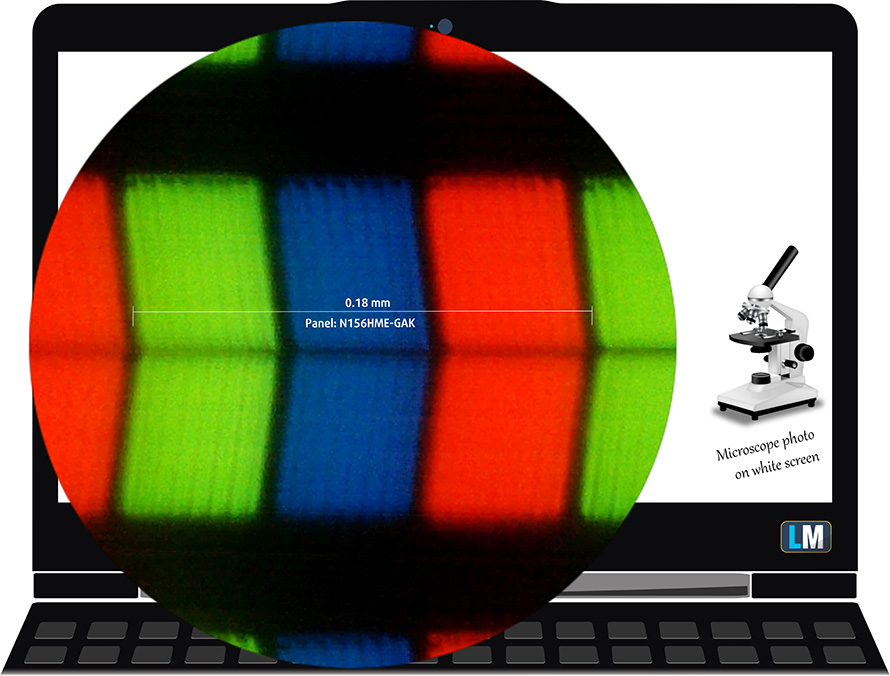
It has comfortable viewing angles. We offer images at 45° to evaluate image quality.
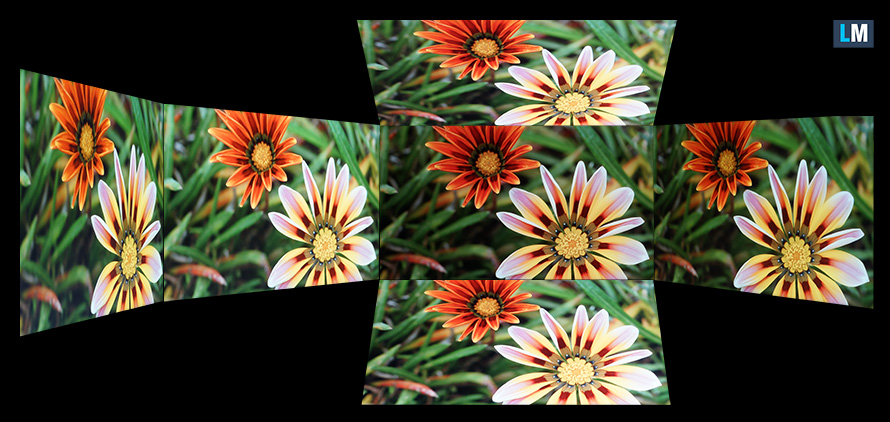
Also, a video with locked focus and exposure.
The measured maximum brightness of 284 nits in the middle of the screen and 272 nits as an average for the whole area, with a maximum deviation of 8%.
The Correlated Color Temperature on a white screen is 6400K – ever so slightly warmer than the optimal for the sRGB standard of 6500K.
In the illustration below you can see how the display performs from a uniformity perspective. In other words, the leakage of light from the light source.
Values of dE2000 over 4.0 should not occur, and this parameter is one of the first you should check if you intend to use the laptop for color-sensitive work. The contrast ratio is very good – 1480:1.
To make sure we are on the same page, we would like to give you a little introduction to the sRGB color gamut and the Adobe RGB. To start, there’s the CIE 1976 Uniform Chromaticity Diagram that represents the visible specter of colors by the human eye, giving you a better perception of the color gamut coverage and the color accuracy.
Inside the black triangle, you will see the standard color gamut (sRGB) that is being used by millions of people on HDTV and on the web. As for the Adobe RGB, this is used in professional cameras, monitors, etc for printing. Basically, colors inside the black triangle are used by everyone and this is the essential part of the color quality and color accuracy of a mainstream notebook.
Still, we’ve included other color spaces like the famous DCI-P3 standard used by movie studios, as well as the digital UHD Rec.2020 standard. Rec.2020, however, is still a thing of the future and it’s difficult for today’s displays to cover that well. We’ve also included the so-called Michael Pointer gamut, or Pointer’s gamut, which represents the colors that naturally occur around us every day.
The yellow dotted line shows ASUS TUF Dash F15 FX517’s color gamut coverage.
Its display covers 55% of the sRGB/ITU-R BT.709 (web/HDTV standard) in CIE1976.
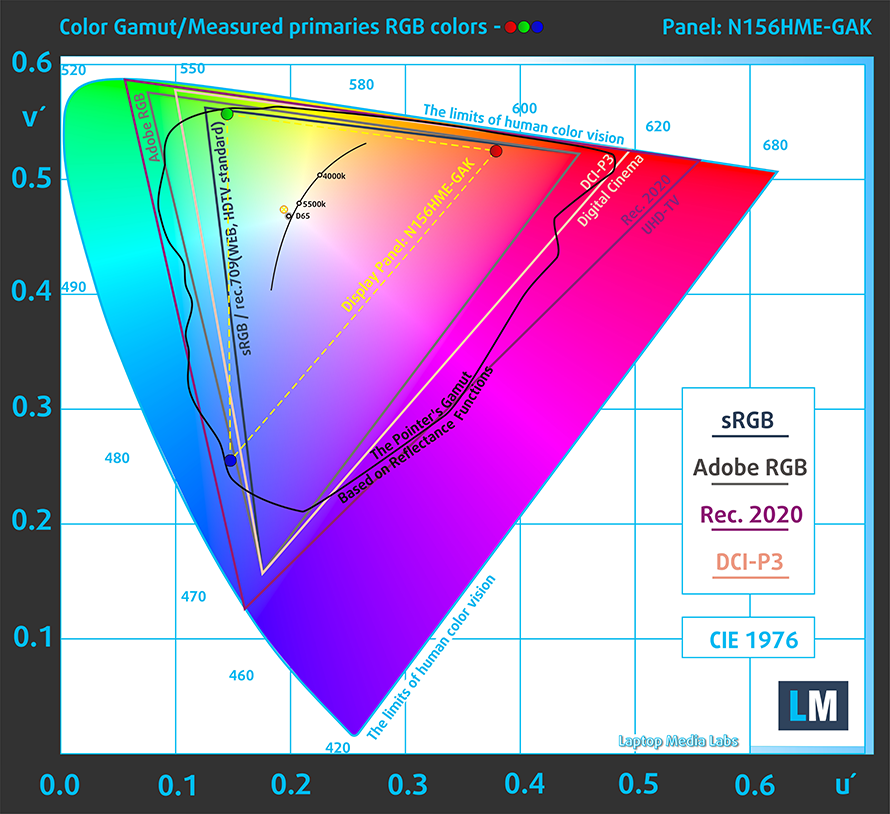
Our “Design and Gaming” profile delivers optimal color temperature (6500K) at 140 cd/m2 luminance and sRGB gamma mode.
We tested the accuracy of the display with 24 commonly used colors like light and dark human skin, blue sky, green grass, orange, etc. You can check out the results at factory condition and also, with the “Design and Gaming” profile.
Below you can compare the scores of ASUS TUF Dash F15 FX517 with the default settings (left), and with the “Gaming and Web design” profile (right).
The next figure shows how well the display is able to reproduce really dark parts of an image, which is essential when watching movies or playing games in low ambient light.
The left side of the image represents the display with stock settings, while the right one is with the “Gaming and Web Design” profile activated. On the horizontal axis, you will find the grayscale, and on the vertical axis – the luminance of the display. On the two graphs below you can easily check for yourself how your display handles the darkest nuances but keep in mind that this also depends on the settings of your current display, the calibration, the viewing angle, and the surrounding light conditions.
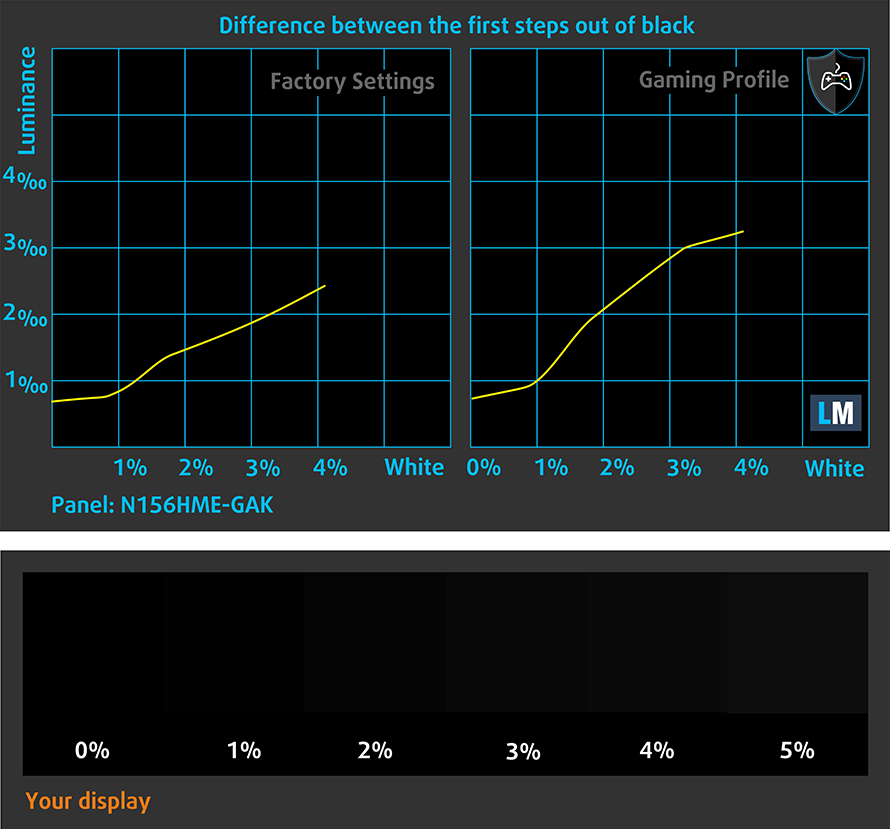
Response time (Gaming capabilities)
We test the reaction time of the pixels with the usual “black-to-white” and “white-to-black” method from 10% to 90% and vice versa.
We recorded Fall Time + Rise Time = 23 ms.
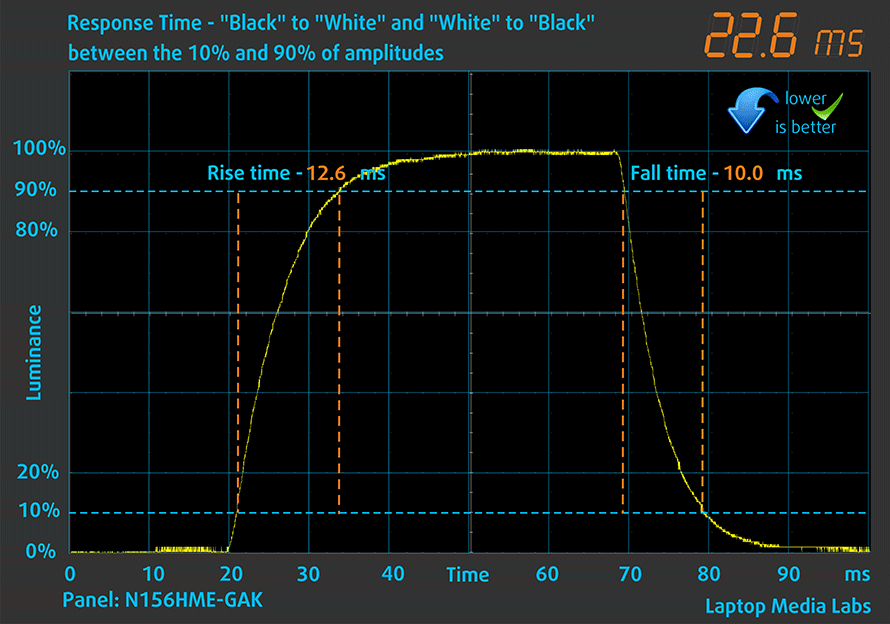
After that, we test the reaction time of the pixels with the usual “Gray-to-Gray” method from 50% White to 80% White and vice versa between 10% and 90% of the amplitude.
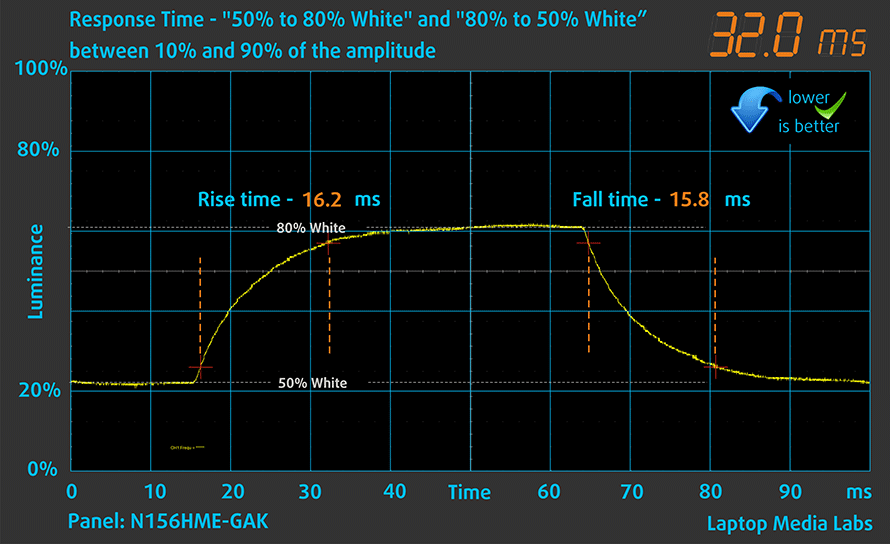
PWM (Screen flickering)
Pulse-width modulation (PWM) is an easy way to control monitor brightness. When you lower the brightness, the light intensity of the backlight is not lowered, but instead turned off and on by the electronics with a frequency indistinguishable to the human eye. In these light impulses, the light/no-light time ratio varies, while brightness remains unchanged, which is harmful to your eyes. You can read more about that in our dedicated article on PWM.
ASUS TUF Dash F15 FX517’s screen doesn’t flicker at any brightness level. Thankfully, this enables you to work for extended periods of time, without the risk of further damaging your eyes and brain.
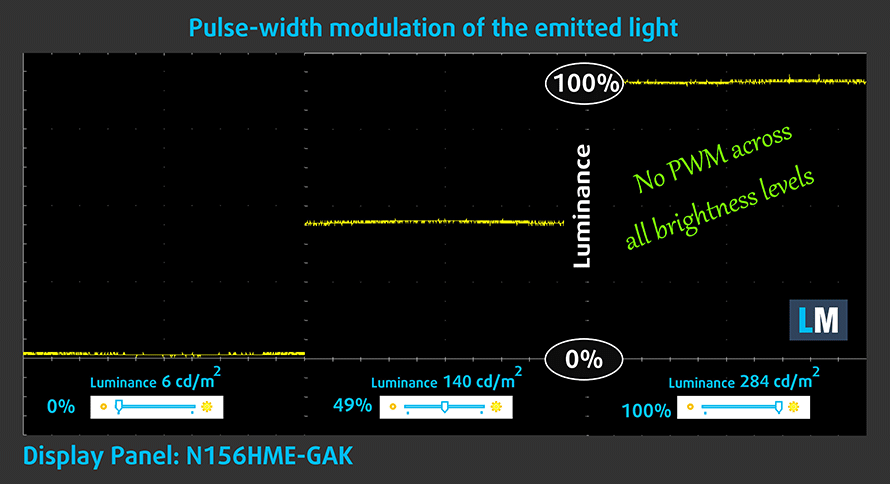
Blue light emissions
Installing our Health-Guard profile not only eliminates PWM but also reduces the harmful Blue Light emissions while keeping the colors of the screen perceptually accurate. If you’re not familiar with the Blue light, the TL;DR version is – emissions that negatively affect your eyes, skin, and your whole body. You can find more information about that in our dedicated article on Blue Light.
Buy our profiles
Since our profiles are tailored for each individual display model, this article and its respective profile package are meant for ASUS TUF Dash F15 FX517 configurations with 15.6″ FHD IPS Innolux N156HME-GAK (CMN153C).
*Should you have problems with downloading the purchased file, try using a different browser to open the link you’ll receive via e-mail. If the download target is a .php file instead of an archive, change the file extension to .zip or contact us at [email protected].
Read more about the profiles HERE.
In addition to receiving efficient and health-friendly profiles, by buying LaptopMedia's products you also support the development of our labs, where we test devices in order to produce the most objective reviews possible.

Office Work
Office Work should be used mostly by users who spend most of the time looking at pieces of text, tables or just surfing. This profile aims to deliver better distinctness and clarity by keeping a flat gamma curve (2.20), native color temperature and perceptually accurate colors.

Design and Gaming
This profile is aimed at designers who work with colors professionally, and for games and movies as well. Design and Gaming takes display panels to their limits, making them as accurate as possible in the sRGB IEC61966-2-1 standard for Web and HDTV, at white point D65.

Health-Guard
Health-Guard eliminates the harmful Pulse-Width Modulation (PWM) and reduces the negative Blue Light which affects our eyes and body. Since it’s custom tailored for every panel, it manages to keep the colors perceptually accurate. Health-Guard simulates paper so the pressure on the eyes is greatly reduced.
Get all 3 profiles with 33% discount
Sound
ASUS TUF Dash F15 FX517’s speakers produce a sound of good quality. Its low, mid, and high tones are clear of deviations.
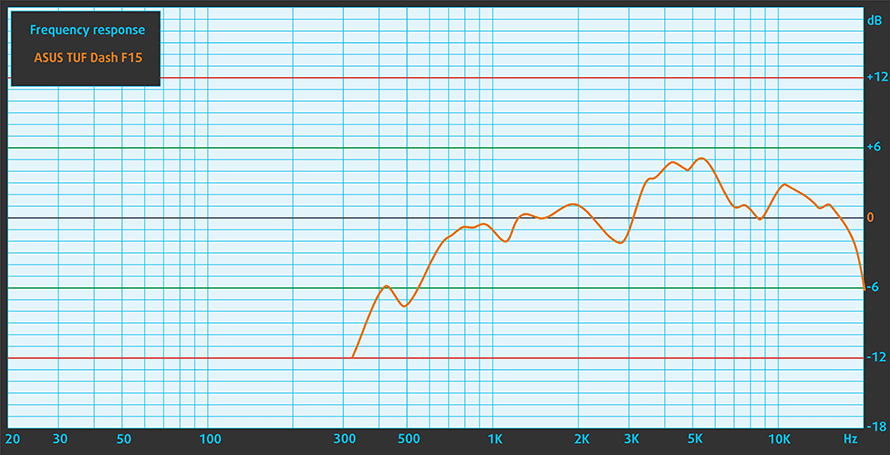
Drivers
All drivers and utilities for this notebook can be found here: https://www.asus.com/Laptops/For-Gaming/TUF-Gaming/ASUS-TUF-Dash-F15-2022/HelpDesk_Download/
Battery
Now, we conduct the battery tests with the Windows Better performance setting turned on, screen brightness adjusted to 120 nits, and all other programs turned off except for the one we are testing the notebook with. This device’s 76Wh battery lasts for 8 hours and 50 minutes of Web browsing, or 6 hours and 48 minutes of video playback.
In order to simulate real-life conditions, we used our own script for automatic web browsing through over 70 websites.

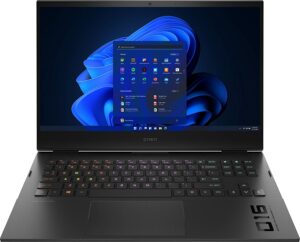
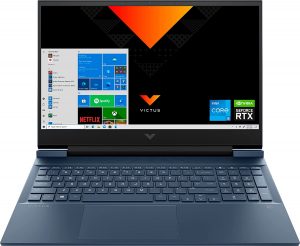
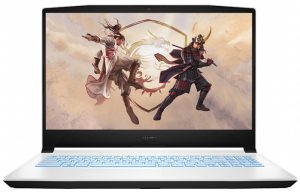
For every test like this, we use the same video in HD.




CPU options
ASUS offers this device with either the Core i5-12450H or Core i7-12650H. The first one has 4 P-cores, and 4 E-cores, while the other sports 6 P-cores, and 4 E-cores.
Results are from the Cinebench R23 CPU test (the higher the score, the better)
Results are from our Photoshop benchmark test (the lower the score, the better)
ASUS TUF Dash F15 FX517 CPU variants
Here you can see an approximate comparison between the CPUs that can be found in the ASUS TUF Dash F15 FX517 models on the market. This way you can decide for yourself which ASUS TUF Dash F15 FX517 model is the best bang for your buck.
Note: The chart shows the cheapest different CPU configurations so you should check what the other specifications of these laptops are by clicking on the laptop’s name / CPU.
Results are from the Cinebench R23 CPU test (the higher the score, the better)
Results are from our Photoshop benchmark test (the lower the score, the better)
GPU options
As far as the graphics goes, the options include the RTX 3050 (75W), RTX 3050 Ti (75W), RTX 3060 (105W), and RTX 3070 (105W).
Results are from the 3DMark: Time Spy (Graphics) benchmark (higher the score, the better)
Results are from the 3DMark: Fire Strike (Graphics) benchmark (higher the score, the better)
Results are from the 3DMark: Wild Life benchmark (higher the score, the better)
Results are from the Unigine Superposition benchmark (higher the score, the better)
ASUS TUF Dash F15 FX517 GPU variants
Here you can see an approximate comparison between the GPUs that can be found in the ASUS TUF Dash F15 FX517 models on the market. This way you can decide for yourself which ASUS TUF Dash F15 FX517 model is the best bang for your buck.
Note: The chart shows the cheapest different GPU configurations so you should check what the other specifications of these laptops are by clicking on the laptop’s name / GPU.
Results are from the 3DMark: Time Spy (Graphics) benchmark (higher the score, the better)
Results are from the 3DMark: Fire Strike (Graphics) benchmark (higher the score, the better)
Results are from the 3DMark: Wild Life (Graphics) benchmark (higher the score, the better)
Results are from the Unigine Superposition benchmark (higher the score, the better)
Gaming tests
| Metro Exodus | Full HD, Low (Check settings) | Full HD, High (Check settings) | Full HD, Extreme (Check settings) |
|---|---|---|---|
| Average FPS | 120 fps | 53 fps | 25 fps |
| Borderlands 3 | Full HD, Medium (Check settings) | Full HD, High (Check settings) | Full HD, Badass (Check settings) |
|---|---|---|---|
| Average fps | 106 fps | 70 fps | 53 fps |

| Shadow of the Tomb Raider (2018) | Full HD, Lowest (Check settings) | Full HD, Medium (Check settings) | Full HD, High (Check settings) |
|---|---|---|---|
| Average | 167 fps | 96 fps | 88 fps |

| Tom Clancy’s Ghost Recon Wildlands | Full HD, Medium (Check settings) | Full HD, High (Check settings) | Full HD, Very High (Check settings) |
|---|---|---|---|
| Average fps | 96 fps | 87 fps | 74 fps |
Temperatures and comfort
Max CPU load
In this test we use 100% on the CPU cores, monitoring their frequencies and chip temperature. The first column shows a computer’s reaction to a short load (2-10 seconds), the second column simulates a serious task (between 15 and 30 seconds), and the third column is a good indicator of how good the laptop is for long loads such as video rendering.
Average P-core frequency; Average E-core frequency; CPU temp.; Package Power
| Intel Core i7-12650H (45W TDP) | 0:02 – 0:10 sec | 0:15 – 0:30 sec | 10:00 – 15:00 min |
|---|---|---|---|
| ASUS TUF Dash F15 FX517 | 3.03 GHz @ 2.67 GHz @ 67°C @ 72W | 3.06 GHz @ 2.68 GHz @ 75°C @ 72W | 2.30 GHz @ 2.25 GHz @ 69°C @ 45W |
Although the fans didn’t seem to struggle, we saw a bit low frequencies. Perhaps it’s due to the early software of the product, but we feel that the higher heat pipe count dedicated to the CPU is definitely not a bottleneck.
Real-life gaming
| NVIDIA GeForce RTX 3050 Ti | GPU frequency/ Core temp (after 2 min) | GPU frequency/ Core temp (after 30 min) | GPU frequency/ Core temp (Max fan) |
|---|---|---|---|
| ASUS TUF Dash F15 FX517 | 1828 MHz @ 79°C @ 75W | 1815 MHz @ 82°C @ 74W | – |
| Lenovo ThinkBook 15p Gen 2 | 1539 MHz @ 69°C @ 50W | 1536 MHz @ 69°C @ 50W | – |
| HP Omen 16 (16-b0000) | 1781 MHz @ 68°C @ 80W | 1767 MHz @ 71°C @ 80W | – |
| HP Envy 15 (15-ep1000) | 1681 MHz @ 87°C @ 75W | 1376 MHz @ 74°C @ 48W | – |
| ASUS ZenBook Pro 15 OLED (UM535) | 1530 MHz @ 66°C @ 50W | 1529 MHz @ 68°C @ 50W | – |
| HP Pavilion Gaming 15 (15-dk2000) | 1613 MHz @ 65°C @ 60W | 1576 MHz @ 73°C @ 60W | – |
| MSI Sword 15 | 1633 MHz @ 73°C @ 60W | 1605 MHz @ 79°C @ 60W | 1644 MHz @ 69°C @ 60W |
| Dell XPS 15 9510 | 1187 MHz @ 74°C @ 40W | 1293 MHz @ 75°C @ 44W | – |
| Dell G15 5511 | 1882 MHz @ 71°C @ 88W | 1878 MHz @ 72°C @ 89W | – |
| Dell G15 5515 | 1857 MHz @ 76°C @ 80W | 1850 MHz @ 77°C @ 80W | – |
| Acer Nitro 5 (AN515-57) | 1616 MHz @ 70°C @ 66W | 1607 MHz @ 72°C @ 65W | 1632 MHz @ 69°C @ 66W |
| MSI Katana GF76 | 1619 MHz @ 76°C @ 60W | 1594 MHz @ 82°C @ 60W | 1632 MHz @ 70°C @ 60W |
Although it was running significantly warmer, the TUF Dash F15 FX517 performed better than the HP Omen 16 (16-b0000).
Gaming comfort
As you can see, the hotspot of this laptop’s keyboard is in the top middle portion. This renders it irrelevant because nobody touches that portion. On the other hand, the WASD area, and the NumPad were always cool thanks to the fans that were placed just below them.

Verdict
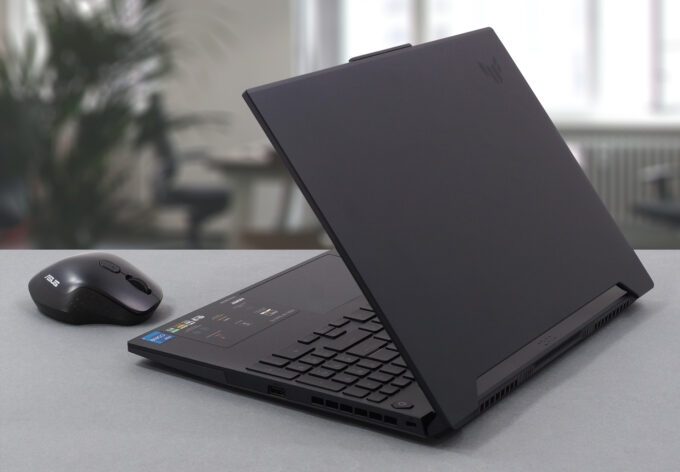 The TUF Dash F15 is for the productivity freaks. The ones that need to do a lot, and need to do it right now. As a side gig – it can play games. And it can do that extremely well. The Core i7-12650H proved to be a great success with it posting respectable results.
The TUF Dash F15 is for the productivity freaks. The ones that need to do a lot, and need to do it right now. As a side gig – it can play games. And it can do that extremely well. The Core i7-12650H proved to be a great success with it posting respectable results.
It still falls behind the Core i7-11800H, but only in 3D rendering tasks. In Photoshop, the new CPU has the upper hand, as its new architecture works significantly better.
ASUS TUF Dash F15 FX517’s IPS panel has a Full HD resolution, comfortable viewing angles, and a good contrast ratio. Unfortunately, it covers only half of the colors on the Web. On the bright side though, its backlight doesn’t flicker, and it comes with a 144Hz refresh rate. By the way, there are 1080p options that come with a 300Hz refresh rate, while the 1440p one “ticks” at 165 Hz.
Interestingly, we were more impressed by the touchpad than the keyboard. It is extremely smooth and super accurate. Overall, we feel that it is among the top 3 best touchpads out there.
It’s good to see that you get a plethora of upgrade options on the inside, and it’s pretty easy to access them. Just pop the bottom panel out, and you’re there.
At the end of the day, a good port selection, some structural integrity (validated by the MIL-STD-810H compliancy), and more than decent performance make the laptop a very compelling option for a wide variety of users. Would it be content creators, gamers, or why not business users?
You can check the prices and configurations in our Specs System: https://laptopmedia.com/series/asus-tuf-dash-f15-fx517/
Pros
- MUX switch
- 2x SODIMM + 2x M.2 PCIe x4 (one supports Gen 4 SSDs)
- Fast display options
- No PWM (Innolux N156HME-GAK (CMN153C))
- HDMI 2.0b (G-Sync)
- Adaptive Sync support (Innolux N156HME-GAK (CMN153C))
- Up to 9 hours of battery life
- The Armoury Crate offers a lot of customization
- Thunderbolt 4 connector
Cons
- No SD card reader
- Covers only 53% of sRGB (Innolux N156HME-GAK (CMN153C))
- CPU has some unextracted potential



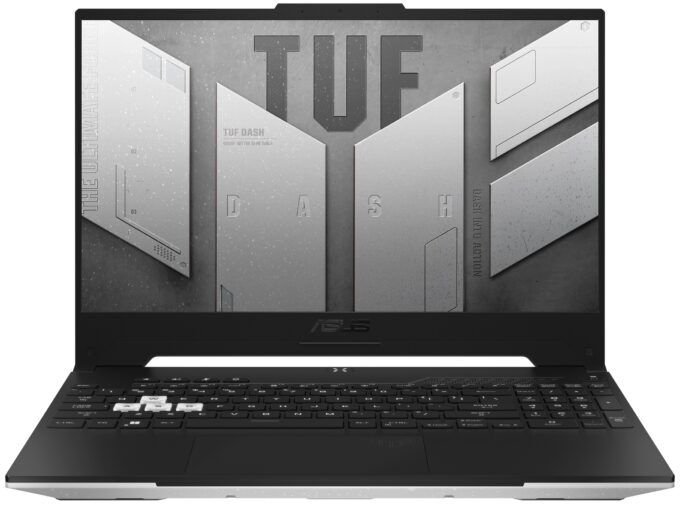
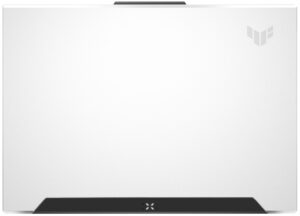



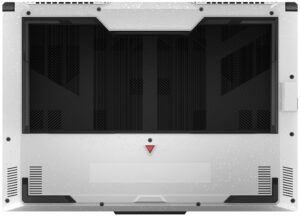
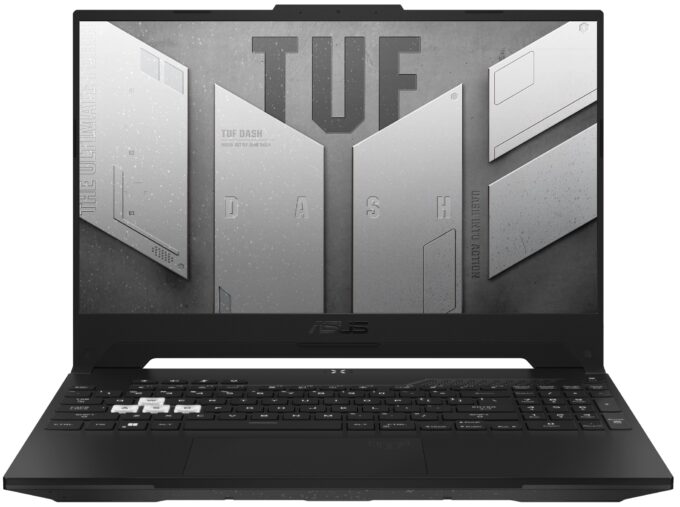
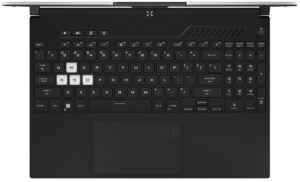

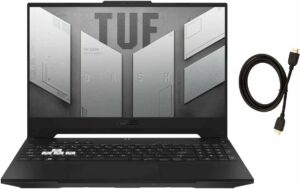



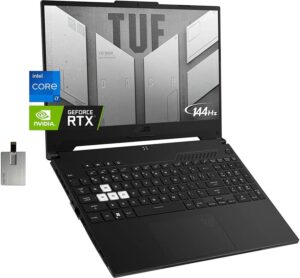
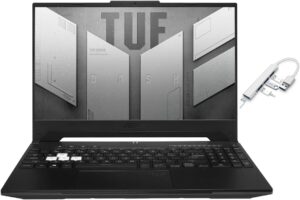
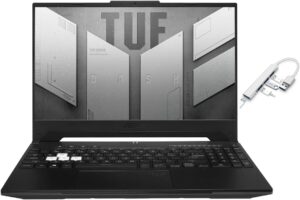

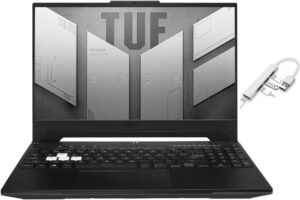

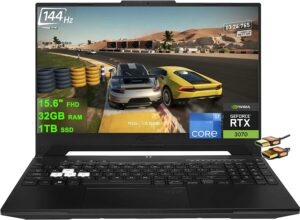
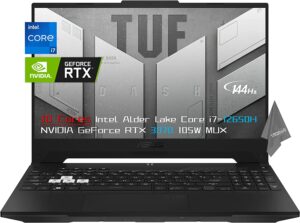

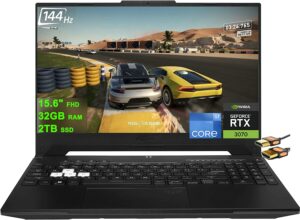


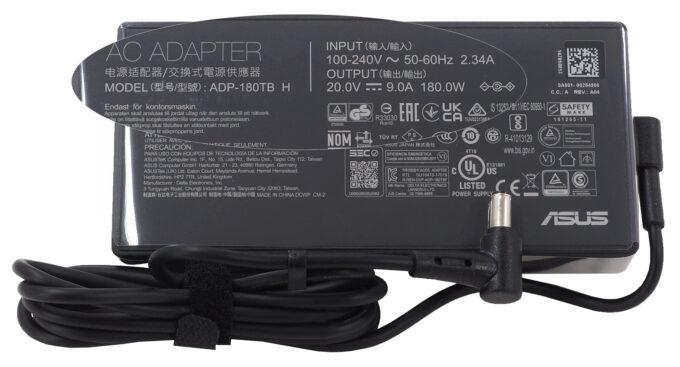
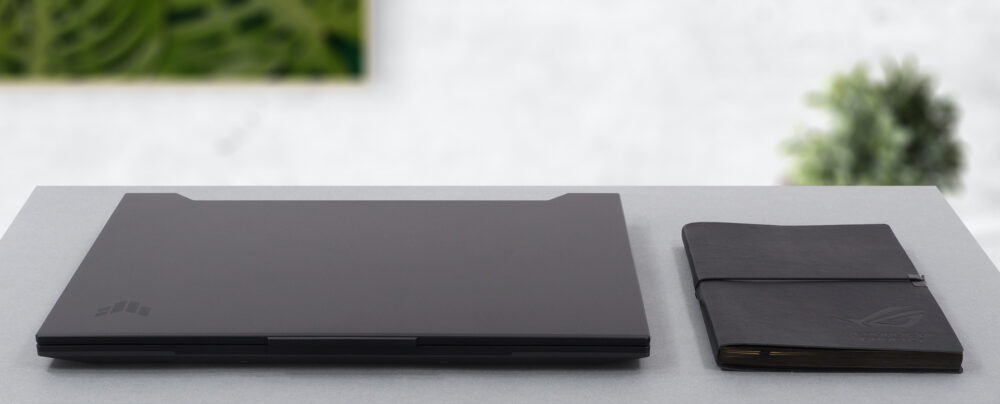


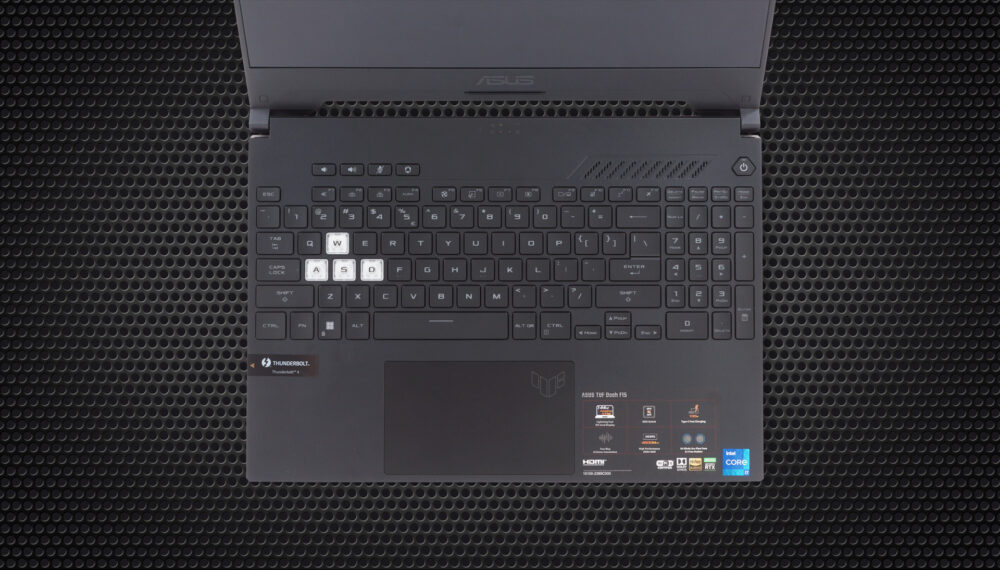
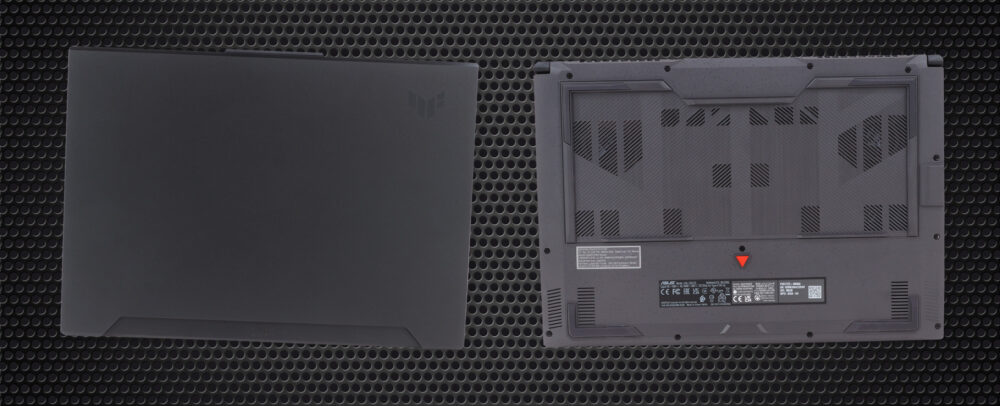


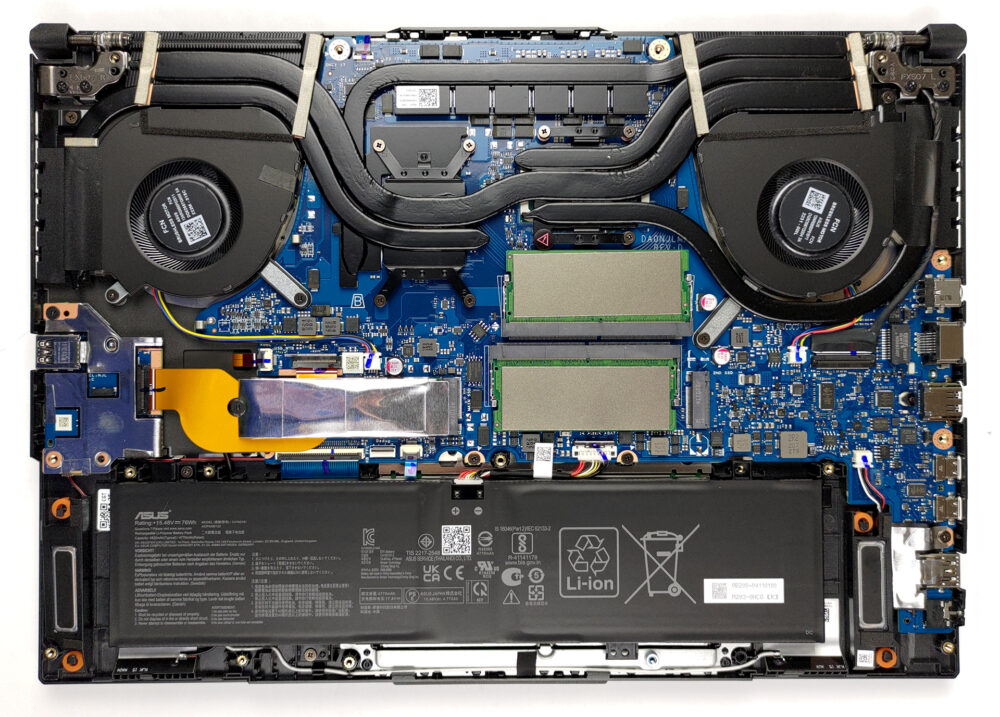

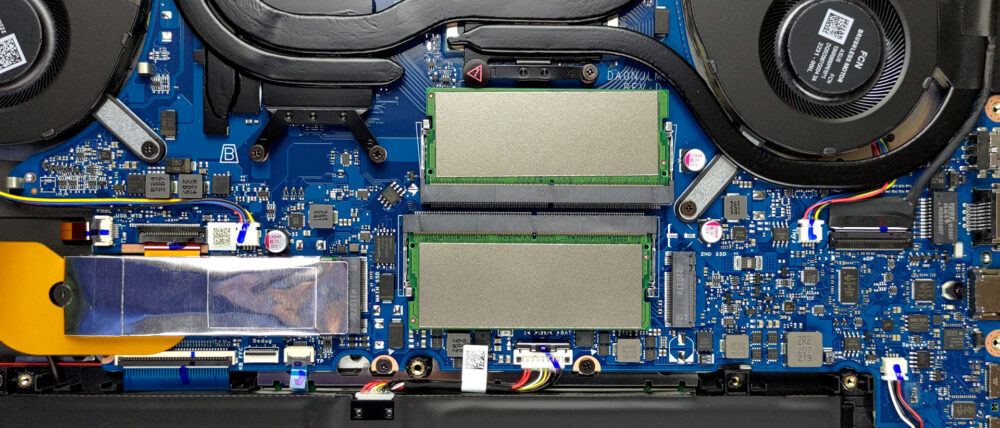

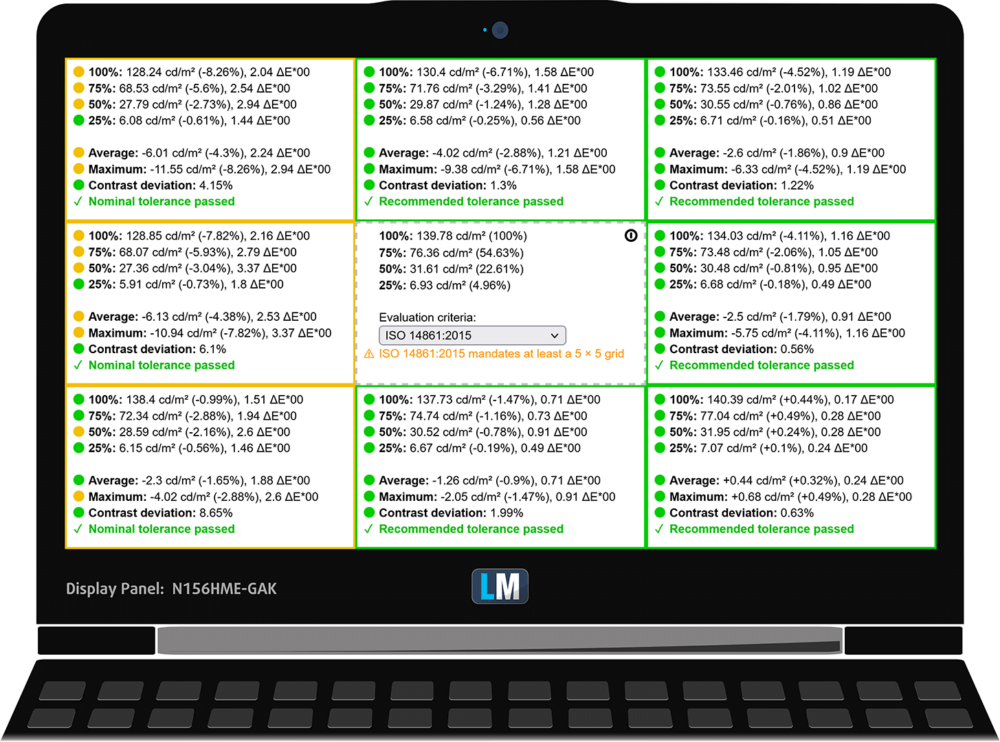
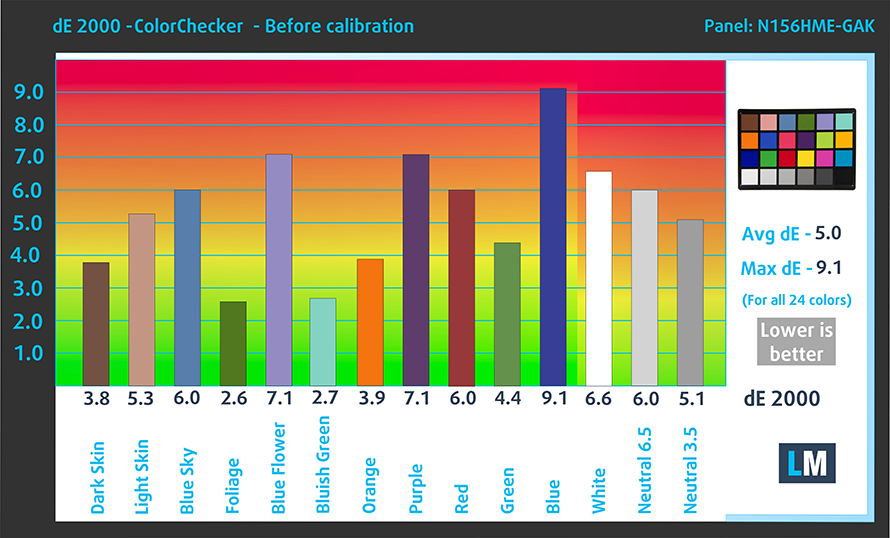
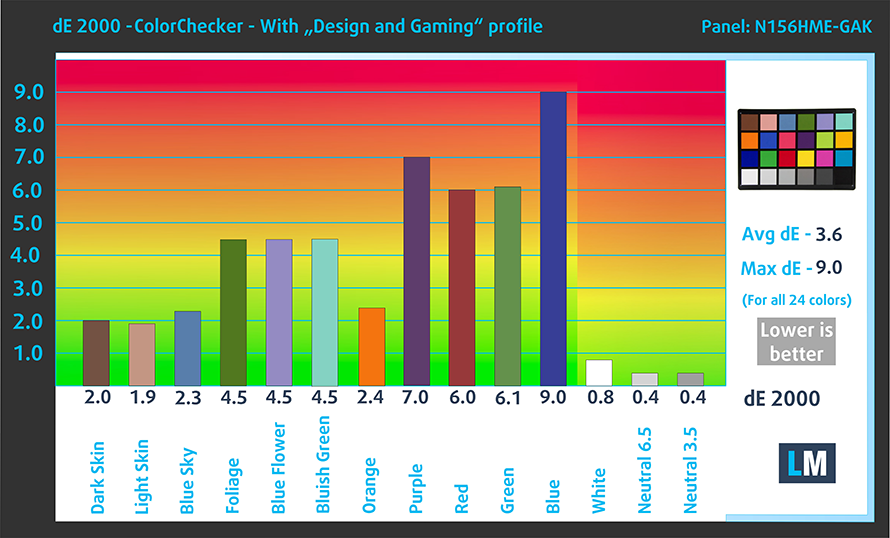

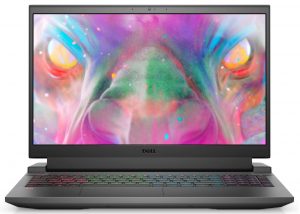
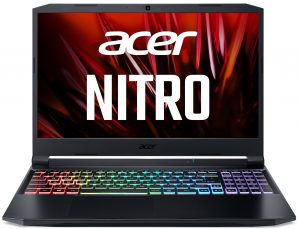
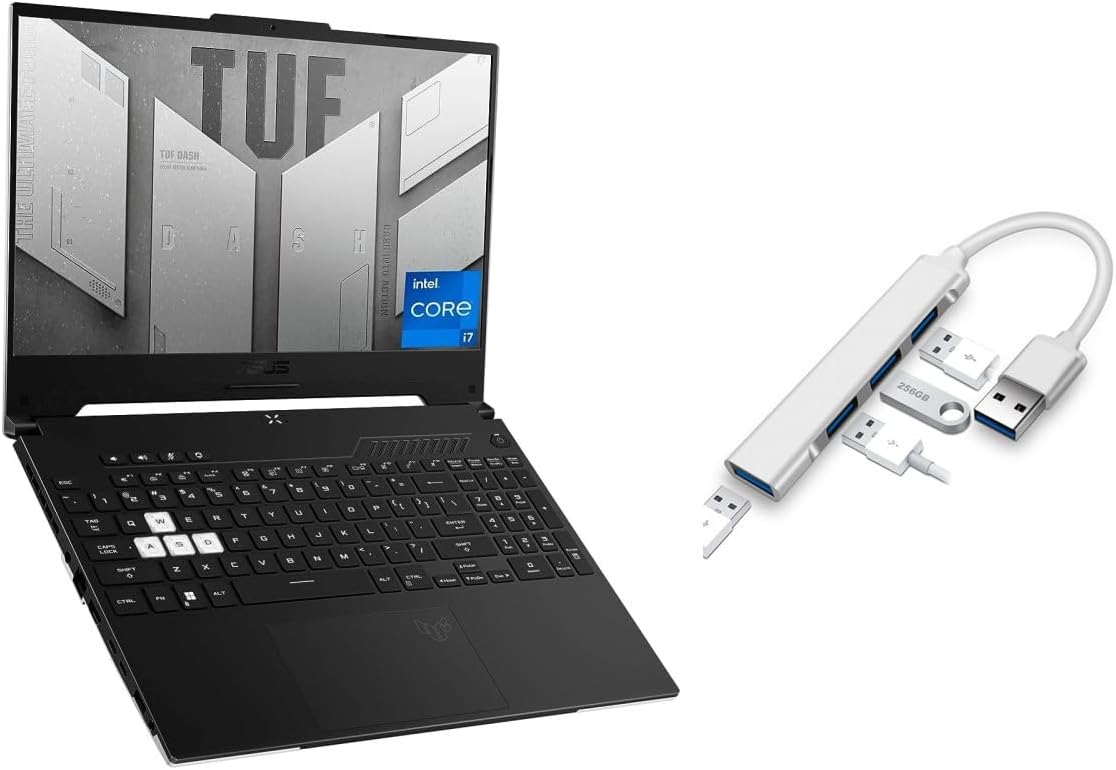
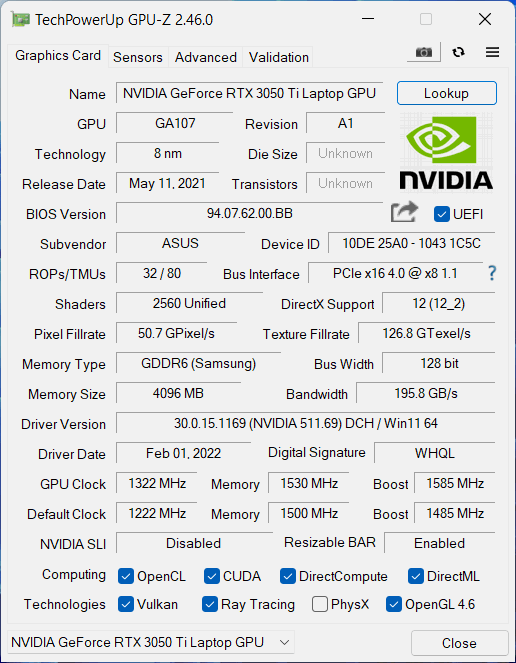










Which M.2 slot is the one this has generation 4? The one that says “main” that comes with the ssd or the one that comes empty? What happens if I put both ssd of 4 generation?
I have the 3060 variant. love it so far. I have two questions. if I was to upgrade the ram to 32gb what speed ram would be optimal for the motherboard and CPU and would the mounting surfaces for the CPU and GPU be able to handle liquid metal thermal paste?